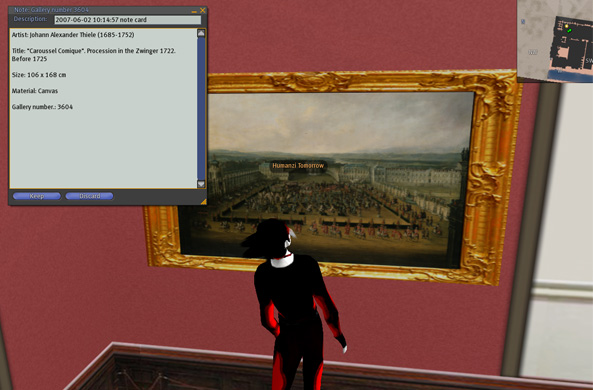If you can imagine the geekiness that drives the creation of such innovative projects as Drupal, combined with the passion that is dedicated to seeing nonprofits successfully serve their constituents, you would be witnessing a typical attendee at this Summit. The energy present in Oakland that week was amazing.
I walked into the Summit a day late during the skill-sharing session. Rather wide-eyed at how I was supposed to enter into the space, a nearby participant approached and welcomed me to sit down and chat until the session was over. This incident wasn't particular either; many individuals were very friendly, thus making the experience all the more rich.
The Summit had the perfect balance of application and theory sessions. I walked out of there learning about new technologies and how to use them, in addition to being aware of current policy and field issues. I was however, wishing that more people who served the arts were present.
Here are some highlights of a few of the sessions I sat in on. You may visit the Aspiration Summit wiki to gain insight as to how all the sessions went.
Case Study: Benetech's Miradi Project
Kevin Smith was very generous with his knowledge- catching me up with concepts of Agile Development and the process of specification gathering in this case. This information was woven into the narrative of how the Miradi Project came to be. After getting the meat of this session, I hopped over to Where are the Biggest Tool Gaps - a practice not so common in this type of small setting, admittedly. :) I came into the tail end of Laura Quinn's colloborative session that tried to pinpoint exactly where some of our energies might be spent to build a more cohesive and exhaustive link among the available technology tools.
Next Steps in Breaking the Integration Deadlock
Tate Hausman, from DotOrganize, along with Holly Ross from NTEN, set out to begin some formalized steps towards addresssing Open API issues. The session began by presenting the various definitions of what Integration could look like, and ended by discussing the many facets involved with resolving the scope of issues. Look forward to a potential API gathering- from NTEN or DotOrganize- to address integration issues!
Software Project Management Mind Meld
This session was particularly relevant to me as I see myself fulfilling a similar capacity in my next job. Jeremy Wallace, of the Fund for the City of New York, moderated a session where a room full of project managers discussed the benefits and drawbacks of various project managent tools: bug trackers, general project management, time tracking, collaborative editing and discussion. Some beneficial themes that also arose were: managing client's expectations, dealing with scope changes and various methods for distilling the requirements gathering process.
Exploring Opportunites for Collaborative Development
Laura Quinn and Jeremy Wallace led this session of mixed developers and administrators. Issues such as intellectual property rights, licensing, branding, buy-in and follow-through, and sharing development practices all arose as common barriers to the collaboration process. This session was hearty and intense. I suggest you review the wiki notes.
Smelling the AJAX Koolaid
I didn't know what AJAX was when I showed up to this session and my brain was satiated with resolution upon leaving. Evan Henshaw-Plath presented the history of AJAX, how websites use it, what the features look like, and the benefits and negatives. I also learned about the code libraries that support AJAX development, ways of using the DOM to create a separate AJAX file from your html one, and how to troubleshoot new browsers. It was awesome, but admittedly, I will never put myself in the position of using it. Hey, but concepts are all I focus on anyways.







 Plotbot's project page
Plotbot's project page Add an Element to Your Script
Add an Element to Your Script Scene Page
Scene Page
 The explosion of social networking sites into the public consciousness and the corresponding user-content-creation phenomenon convinced the editors at
The explosion of social networking sites into the public consciousness and the corresponding user-content-creation phenomenon convinced the editors at 